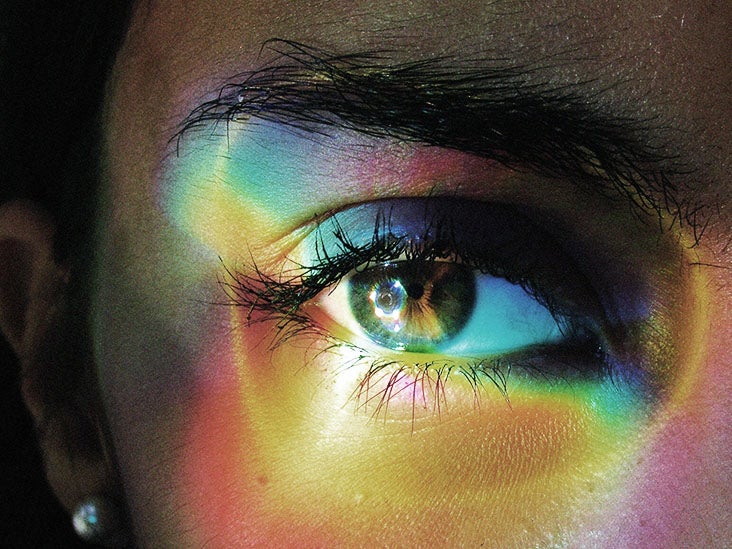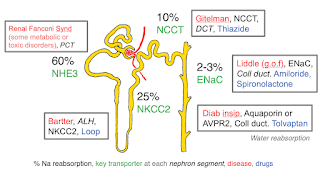Opiate pupils: How opioids affect the eyes - Medical News Today

One less well-known but potentially serious consequence of opioid use is damage to the eyes. Opioid use will also usually make a person's pupils constrict.
Opioids, which people sometimes call narcotics, are a class of drugs that occur naturally in the poppy plant and act on the brain to provide pain relief. They include prescription pain-relieving medications — such as oxycodone (OxyContin), hydrocodone (Vicodin), codeine, and morphine — and some illegal drugs, such as heroin.
Opioid misuse can lead to several serious health consequences, including overdose and death.
This article explores these effects and explains how an individual can find help if they are misusing opioids.
Keep reading to learn more about how opioid use can affect the eyes.
Although factors such as low light, stimulatory medications, trauma, migraine, and other factors can cause a person to have dilated, or large, pupils, few things make them small.
Pupillary constriction, or miosis, is an indicator of opioid use. When someone uses opioids, their pupils constrict as their body responds to the drug, and they may no longer change in response to light.
When opioids enter an individual's system, they attach to opioid receptors in the brain and change how the entire nervous system works.
Doctors usually divide the
The peripheral nervous system has two divisions:
- The somatosensory nervous system: This system is under the voluntary control of the individual and includes nerves attached to skeletal muscles.
- The autonomic nervous system: This system is not under voluntary control. It contains the sympathetic nervous system, which stimulates bodily functions, and the parasympathetic nervous system, which slows down various functions.
Opioids stimulate the parasympathetic portion of the autonomic nervous system and constrict rather than dilate the pupils. The pupil becomes smaller when the circular iris sphincter muscle contracts under parasympathetic nervous system controls.
Additionally, eye movement abnormalities
The long-term use of opioids can cause more severe issues, such as eye infections that
Although each person's experience with drug misuse is unique, some general signs and indicators may be present in someone who has an opioid use disorder. These include:
Physical signs:
- increase or decrease in appetite
- weight loss or gain
- flu-like symptoms, such as sweating and shaking
- drowsiness
- slower breathing
- constipation
- nausea and vomiting
- scabs and sores on the skin
Behavioral signs:
- personality changes
- avoiding family or friends
- changes in friends or activities
- lower grades at school or impaired performance at work
- isolation
- secretive behavior
- rapid mood shifts
- stealing money or valuable items
- wearing long sleeves or hiding the arms
A person living with someone with an active addiction may also notice signs such as missing medications, shoelaces, or belts. They may also find syringes, bags with powder residue, or burnt spoons in their surroundings.
Opioids can cause effects such as drowsiness, mental fog, and digestive system upset. If someone overdoses on opioids, it is a medical emergency that can have lethal consequences. Therefore, if any of the following signs of an overdose are present, it is essential to call 911:
- pinpoint pupils
- slow or absent breathing or heartbeat
- an extremely pale face that may feel clammy
- limp limbs and body
- a purple or blue tinge to the fingernails or lips
- vomiting
- making gurgling noises
- inability to speak or otherwise respond
- appearing unconscious
The symptoms may progress gradually, starting with drowsiness and pinpoint pupils that do not react to light. They may continue through to loss of consciousness, an inability to breathe, and even death if the individual does not receive treatment.
Pinpoint pupils are one of the main signs of overdose, as the drug interacts with the autonomic nervous system. As the pupils' response to light is critical for evaluating how the CNS is functioning, doctors can use the pupillary light reflex to determine the status of individuals who have overdosed.
Although opioid use disorder can cause serious health and social problems, it is possible to recover. Drug rehabilitation programs can help a person withdraw from the drug, overcome any personal issues that might motivate drug use, and get their life back on track.
Seeking help is the most critical step on the route to recovery. A qualified healthcare professional, such as a doctor, psychiatrist, psychologist, or nurse, can assess the individual and develop a treatment plan to suit their needs.
The treatment plan may include:
- Appointments: A person will likely need to make regular visits to a treatment center or clinician for ongoing assessments and individual or group counseling.
- Medications: Many people receive medication alongside counseling. Common options include methadone, buprenorphine, and naltrexone. These medications do not create a new addiction when a person uses them according to the prescription.
- Commitment: The individual will need to agree to cooperate fully with treatment, which involves keeping all appointments, agreeing to drug testing, taking medications as a doctor has prescribed them, and refraining from using drugs without a prescription.
- Information: It is important for the individual to understand the risks of relapse and other safety concerns.
Although overcoming opioid use disorder is challenging, people can find help and support as they navigate their journey back to health. The solidarity and advocacy that the following organizations provide can help improve the chances of a successful recovery:
Smaller, constricted pupils are an indicator of opioid use. When a person uses opioids, the parasympathetic nervous system contracts the circular iris sphincters, making the pupils small. As a result, the pupils may no longer respond to light. Additionally, the pupils may move abnormally, and the eyelids may droop.
Opioid use disorder can lead to serious health consequences, including vision loss, but recovery is possible. If an individual is concerned about opioid use, they should seek medical attention. A doctor can put together a suitable treatment plan and help the individual find sources of support.

Comments
Post a Comment